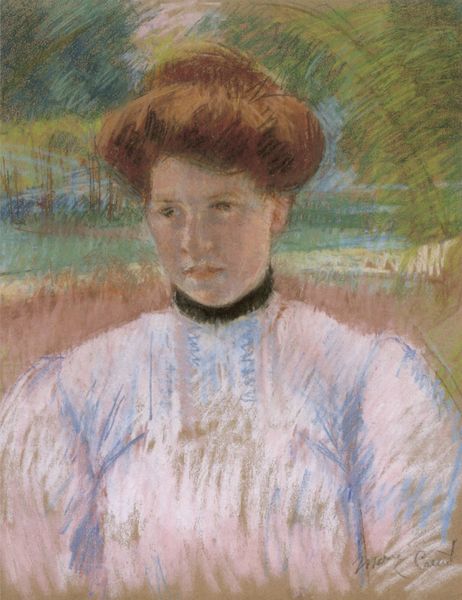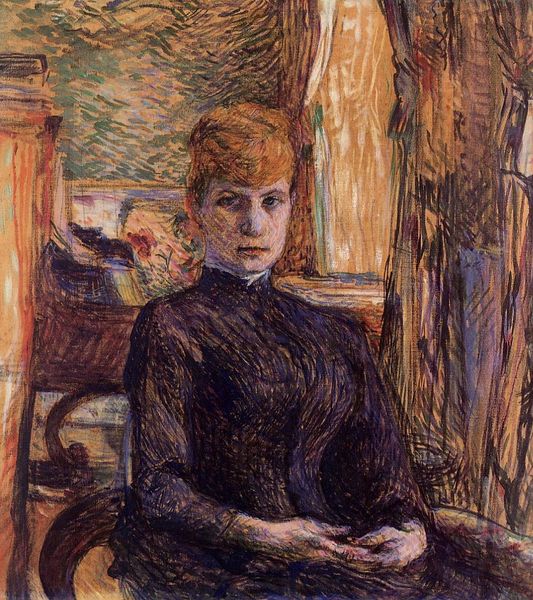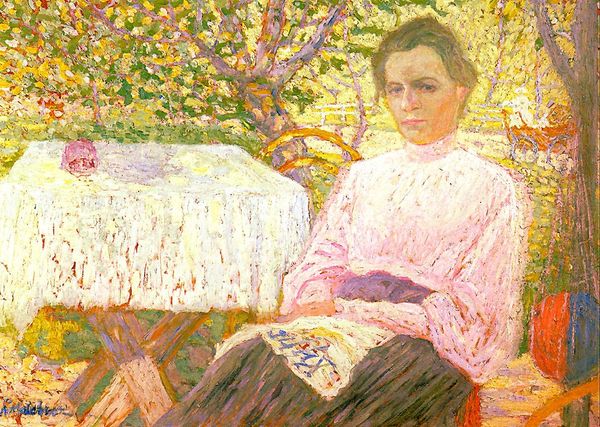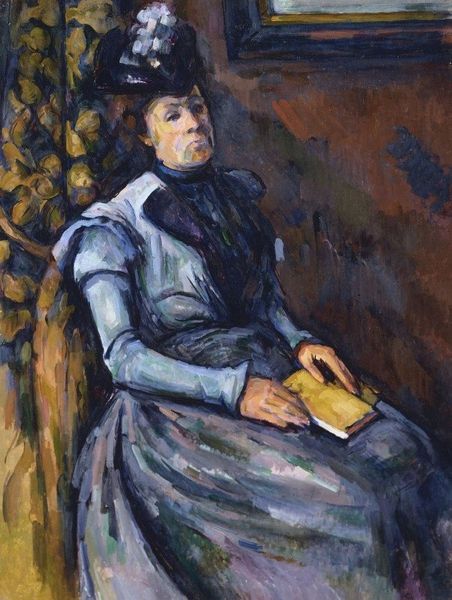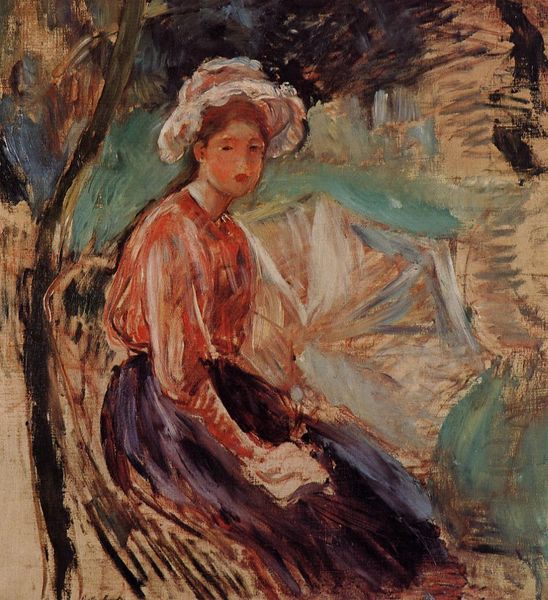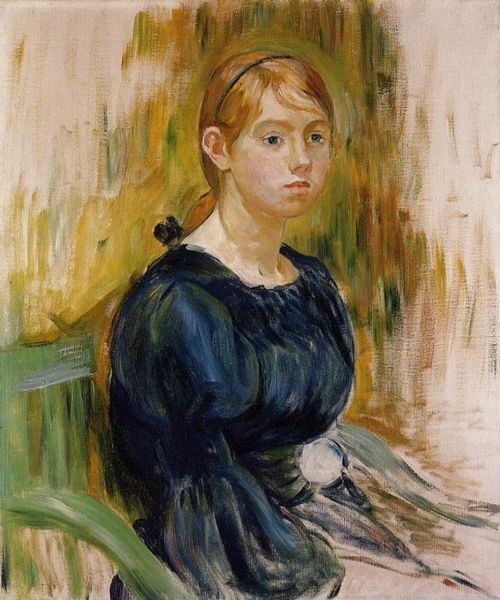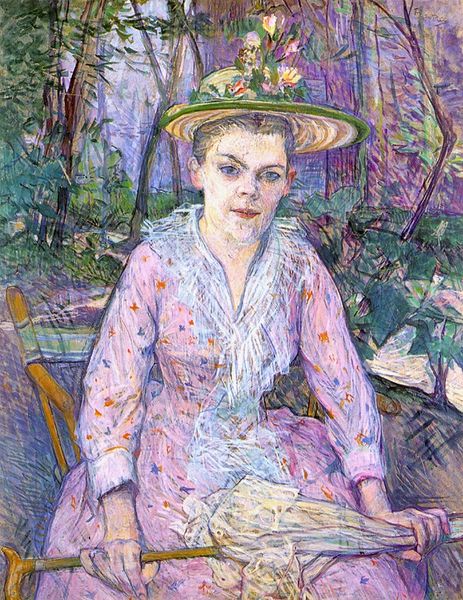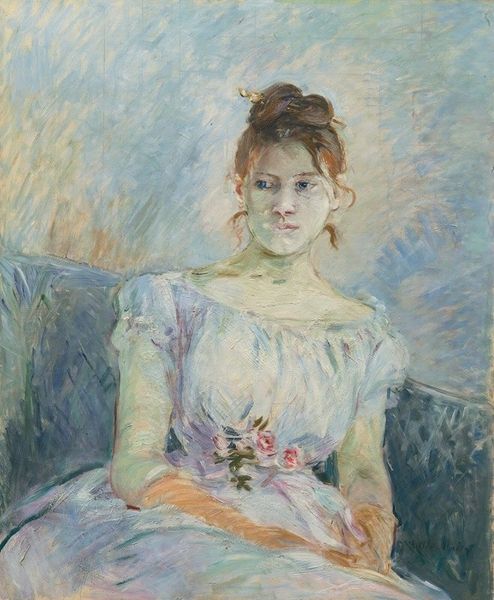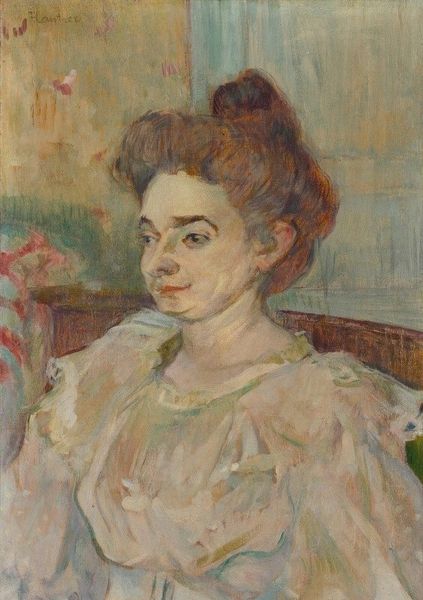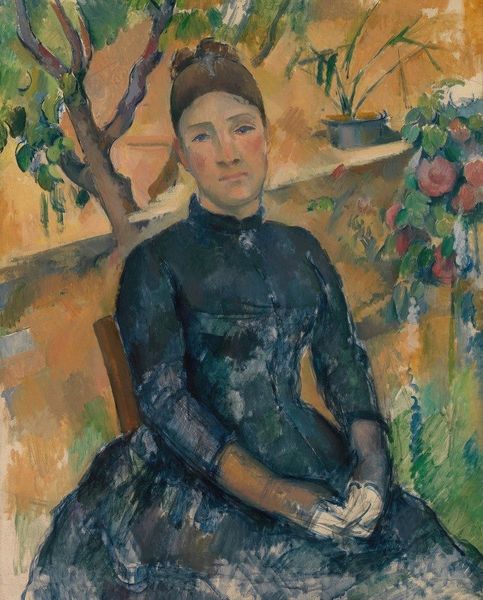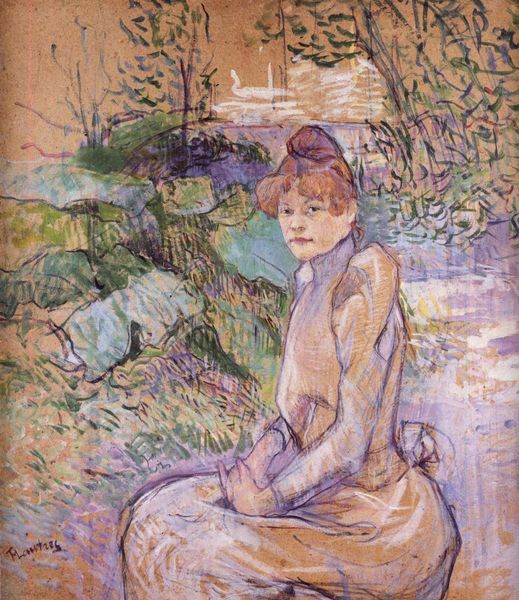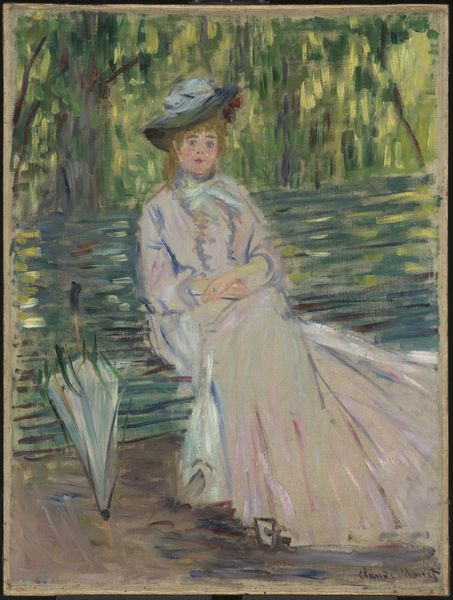
Copyright: Public Domain: Artvee
Editor: This is Henri de Toulouse-Lautrec’s “Lady with a Dog,” painted in 1891 using oil paint. I’m struck by the informality of it. She’s just… there, with her dog. What do you see in this piece? Curator: For me, this painting opens up a discussion about labor and class. Lautrec, although an aristocrat himself, often depicted the working class. He used oil paint, a readily available and relatively inexpensive medium at the time, allowing for wider access to artistic expression and a shift away from traditional artistic hierarchies. What is the subject wearing and holding? How do you perceive it within the piece? Editor: She’s in a polka dot blouse, with a striped skirt, sitting with a dog on her lap. It looks like a small, maybe pampered, dog. Does that inform our understanding? Curator: Precisely! The materiality of her clothing, the mass-produced patterns versus hand-sewn garments, speaks to the shifting modes of production in the late 19th century. Furthermore, the presence of the dog is essential because companion animals were becoming increasingly fashionable and signified specific societal values and increased industrial production and therefore increased free time. The casual pose suggests a critique of the formal portraiture traditionally reserved for the elite, focusing instead on everyday life. How does the scene outside, the implied external environment, interact with the woman? Editor: I see a rudimentary fence and what may be unkempt garden growth; however, the lady seems composed, unlike her immediate surroundings. This reinforces the idea of differing standards and treatment by class? Curator: Excellent point! What initially appears as a simple scene becomes an exploration of material culture and social stratification through Lautrec’s chosen medium and subject matter. In essence, what do we see represented materially and texturally informs social status, commentary, and expectation. Editor: It’s interesting how focusing on the materials used and the objects depicted reveals so much about the society at the time. I will keep this method in mind in future evaluations. Curator: Material-based examinations really can shed new light and provoke deeper interpretation of not only what something is but what it may represent on a variety of scales and circumstances.
Comments
No comments
Be the first to comment and join the conversation on the ultimate creative platform.
